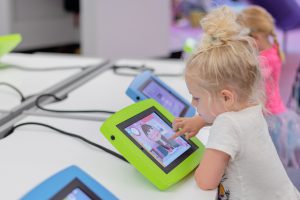K-3 Screener & Assessment

A more holistic approach to diagnostic literacy screening and assessment
We are building the next generation of assessments that will present an early, more accurate picture of where an individual child is in a developmental continuum of language and pre-reading/reading skills. In addition to code and language-based skills (similar to traditional screeners), we are studying how trauma, social emotional learning, perceived ability, growth mindset, effort, teacher perceptions of child behavior, parent beliefs, geo-codes, and demographic characteristics may influence and more accurately predict reading ability and risk. For each child, the assessment predicts the likelihood of being a proficient reader up to the end of grade 3 and identifies areas of strength and weakness.
Data collection
Data collection for our normative sample is coming from students across the U.S. including Florida, Georgia, Oregon, and California. This diversity of students helps us understand the many factors that influence reading and language development in various contexts. We are piloting the content from the Reach Every Reader assessment and collecting additional data through parent and teacher questionnaires, demographic data, and extant geo-location data connected to each individual student and school. This enables us to more accurately screen children for risk, and identify the factors that contribute to that risk for each student.

Innovative technology to support an efficient and enjoyable user experience
The Reach Every Reader assessment employs innovative computer adaptive technology developed by our team to provide a personalized experience based on user responses. We are also testing voice-recognition technology to assist in the electronic scoring of verbal responses. A game-based design provides an engaging and enjoyable experience for students.

